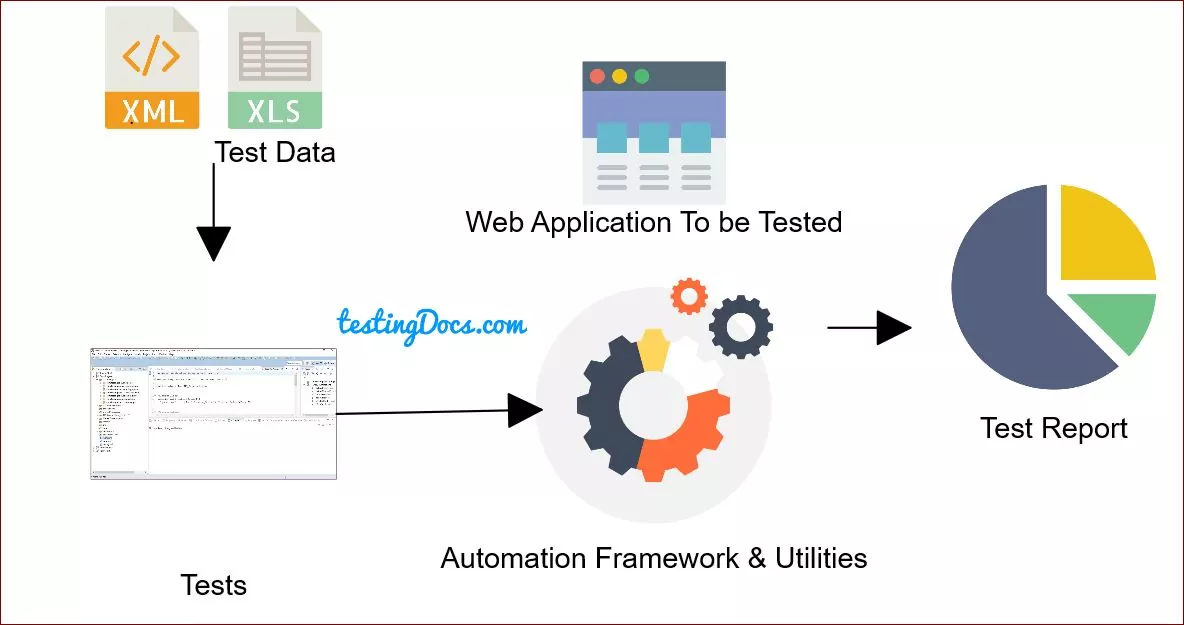
This is very useful for your Selenium tests because you can create a Selenium server and browser instance before you start running your test suite.
TestNG supports the following three additional setup and teardown levels: and TestNG goes beyond the idea of just writing annotated methods and allows you to define these methods that will be run after or before your test suites, test groups, or test methods. You can specify any test method name in TestNG as the method’s name constraint is not present in TestNG like it is in JUnit. In TestNG, there is no need to state and in a project, which is present in JUnit. It effortlessly supports integration with various other tools and plugins like Eclipse IDE and built automation tools like Ant and Maven.  It can generate HTML test reports of the results representing: the number of test cases runs, the number of test cases failed, the number of test cases skipped. It supports data-driven testing using Data Providers.
It can generate HTML test reports of the results representing: the number of test cases runs, the number of test cases failed, the number of test cases skipped. It supports data-driven testing using Data Providers.  Test cases can be ‘grouped,’ ‘prioritized,’ and ‘executed’ more efficiently. TestNG Annotations are used to create test cases easily. From simple unit testing to complex integrated testing, it is designed to simplify all your testing requirements such as functional testing, regression, end-to-end testing, and more.Īs part of this TestNG in Selenium tutorial, you will learn the following topics:Ĭheck out this Intellipaat video to know ‘What is TestNG in Selenium?’: The suffix ‘NG’ stands for Next Generation, signifying the new functionalities that TestNG brings to the table. It overcomes the constraints and disadvantages of JUnit and introduces an entirely new set of properties, making TestNG more powerful and easy to use. TestNG use these annotations to help in making a robust test framework.TestNG in Selenium is a Java testing framework, inspired by JUnit and NUnit. So it is ok to spend more time to understand this TestNG suite. We are going to use above suite to understand annotations more clearly. Each class list have more than one class. There are two test groups – “ allselenium_example_test_1” and “ allselenium_example_test_2“. There is only one suite – “ allselenium_example_suite“. Each class list is a list of classes and can be one or moreįor Example, consider below TestNG test suite. Each test group can have more than one class list. Suite can have ‘n’ number of test groups. It is nothing but a xml file to group classes under test group and test groups under suite. Runtime processing - Some annotations are available to be examined at runtime.īasic understanding of TestNG test suite is necessary to understand the behavior of TestNG annotations.
Test cases can be ‘grouped,’ ‘prioritized,’ and ‘executed’ more efficiently. TestNG Annotations are used to create test cases easily. From simple unit testing to complex integrated testing, it is designed to simplify all your testing requirements such as functional testing, regression, end-to-end testing, and more.Īs part of this TestNG in Selenium tutorial, you will learn the following topics:Ĭheck out this Intellipaat video to know ‘What is TestNG in Selenium?’: The suffix ‘NG’ stands for Next Generation, signifying the new functionalities that TestNG brings to the table. It overcomes the constraints and disadvantages of JUnit and introduces an entirely new set of properties, making TestNG more powerful and easy to use. TestNG use these annotations to help in making a robust test framework.TestNG in Selenium is a Java testing framework, inspired by JUnit and NUnit. So it is ok to spend more time to understand this TestNG suite. We are going to use above suite to understand annotations more clearly. Each class list have more than one class. There are two test groups – “ allselenium_example_test_1” and “ allselenium_example_test_2“. There is only one suite – “ allselenium_example_suite“. Each class list is a list of classes and can be one or moreįor Example, consider below TestNG test suite. Each test group can have more than one class list. Suite can have ‘n’ number of test groups. It is nothing but a xml file to group classes under test group and test groups under suite. Runtime processing - Some annotations are available to be examined at runtime.īasic understanding of TestNG test suite is necessary to understand the behavior of TestNG annotations. #Testng annotations software#
Compile-time and deployment-time processing - Software tools can process annotation information to generate code, XML files, and so forth.Information for the compiler - Annotations can be used by the compiler to detect errors or suppress warnings.
 Annotations can change the way a program is treated by compiler However it has no direct effect on the operation of the annotated codeĪnnotations have a many uses and few important among them are given below.
Annotations can change the way a program is treated by compiler However it has no direct effect on the operation of the annotated codeĪnnotations have a many uses and few important among them are given below. 
Generally used to associate certain metadata (data about data) to instance variables, methods, classes, etc.They do not change the action of a compiled program.A Brief Introduction to AnnotationsĪnnotations are used to provide additional information (Metadata) about a program To be specific it provides additional information about variables, methods or classes to compiler. This article explains basics of all TestNG annotations, provides examples for each annotation, explains each TestNG annotation in more detail along with its attributes, and provides tips and tricks for efficient usage.








 0 kommentar(er)
0 kommentar(er)
